Thinking about the Omnipod 5, aka, Iron Man
“Call me the billionaire playboy!”

Want to listen to the Podcast on this?
Episode 5: Mastering Omnipod 5 – The Iron Man of AID. We focus on the sleek, tubeless Omnipod 5, a system that provides fully automated insulin adjustments with SmartAdjust technology. We will discuss how to set it up, avoid common pitfalls, and optimise insulin dosing for meals and activity.
You can look forward to:
- Tubeless design makes it discreet and easy to wear
- Highly automated, requiring little user input, and super simple to set up and operate
- The algorithm is housed in the Pod allowing seamless automated adjustments.
If you select the Omnipod 5, here are the essentials:
- How the algorithm works
- Starting settings
- Tips & tricks
- Preventing and treating hypos
- High-fat meals
- Exercise
How the algorithm works
The Omnipod 5 has four components:
- The Omnipod 5 Controller
- A Dexcom G6 or G7 compatible phone if using a Dexcom sensor
- If using FreeStyle Libre 2 Plus, no phone is needed, but no followers are allowed
- The Omnipod Pod (the algorithm is inside the pod) that does not have tubing

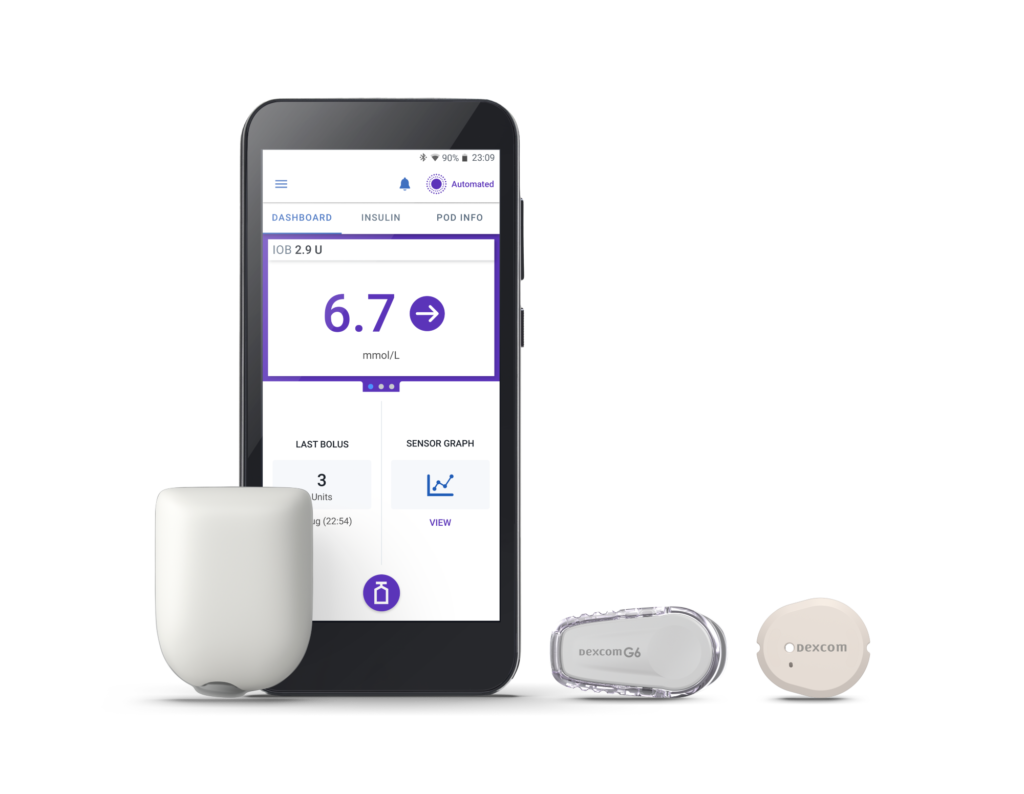
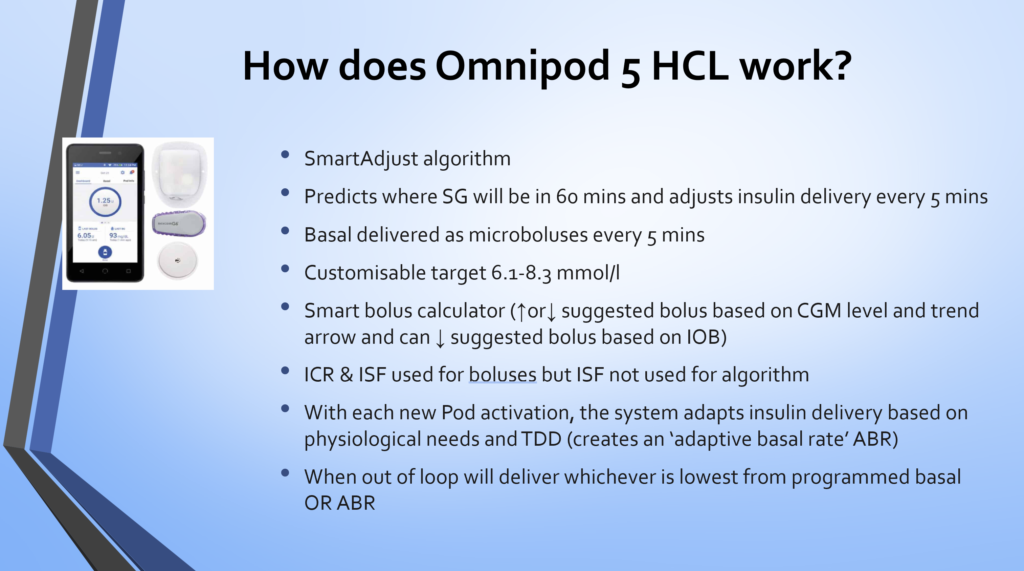
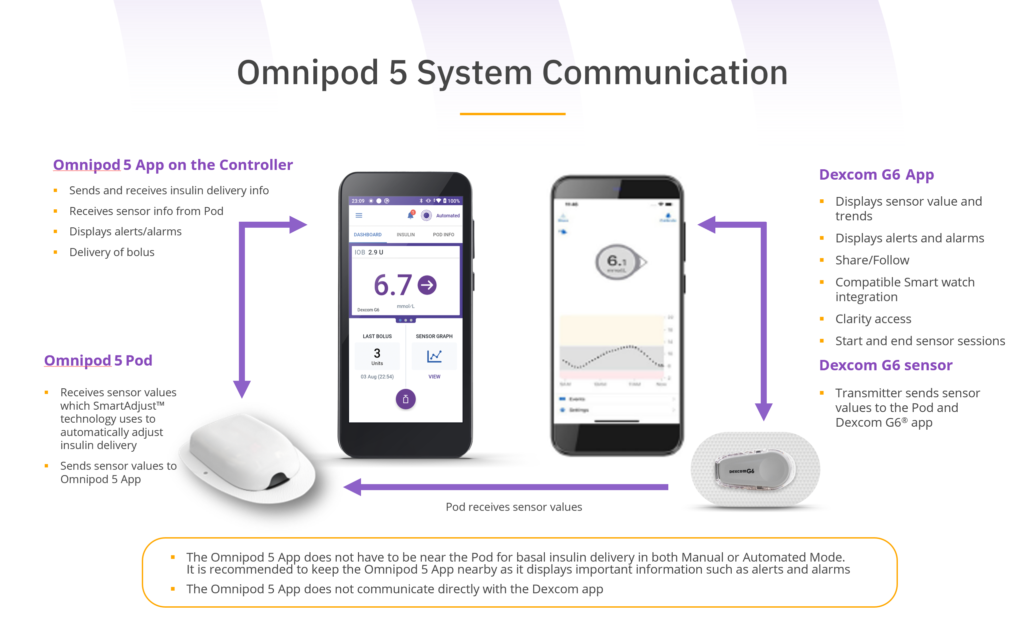
Take homes:
- The algorithm works from an automatically calculated basal rate, called the Adaptive Basal Rate
- Basal increases when the glucose is rising and reduced or stopped when it’s dropping every 5 minutes
Starting settings
The SmartAdjust just needs one basal rate and a 24-hour total basal amount to get going, so it’s very simple, The first Pod will work at its half potential, and it goes full steam ahead from the second pod.
Starting an AID system can be broken down into two parts.
First, SURVIVE,
Then, THRIVE. Y
You can download a How to Survive and Thrive – (Omnipod 5). Amore comprehensive onboarding resource is also available (Omnipod 5)
Tips & tricks
If you want to get 70% or more time in range, do not forget the basics:
- Three balanced meals
- Accurate carb counting
- Bolus insulin 10-20 minutes before eating
- Be active for 10-15 minutes after eating
- Rotate cannula sites
Follow the above and you will have: 99 Problems But Highs Aint One (click if you want to download it, use it, share it!)
Other things to be aware of:
- You need a phone to operate the Dexcom G6. No phone, no work!
- It only holds 200 units, so the Pods will not last three days if more than 65 units per day.
Preventing and treating hypos
It would be awesome if hypos were a thing of the past. But this will not be the case.
The algorithm will be able to stop hypos overnight!
However, if you give too much bolus insulin for a meal or exercise without planning, hypos will still happen.
You will likely need less hypo treatment than normal because the algorithm will have already slowed or stopped the insulin at least 30 minutes prior.
You may also want to prevent hypos if the glucose is 4.0-6.0mmol/L (70-110mg/dL) and trending down.
This is a guide I use based on weight. This example is for a 30kg person and the weight can be changed. The Survive and Thrive – (Omnipod 5) will provide a personalised chart upon entering your weight at the top
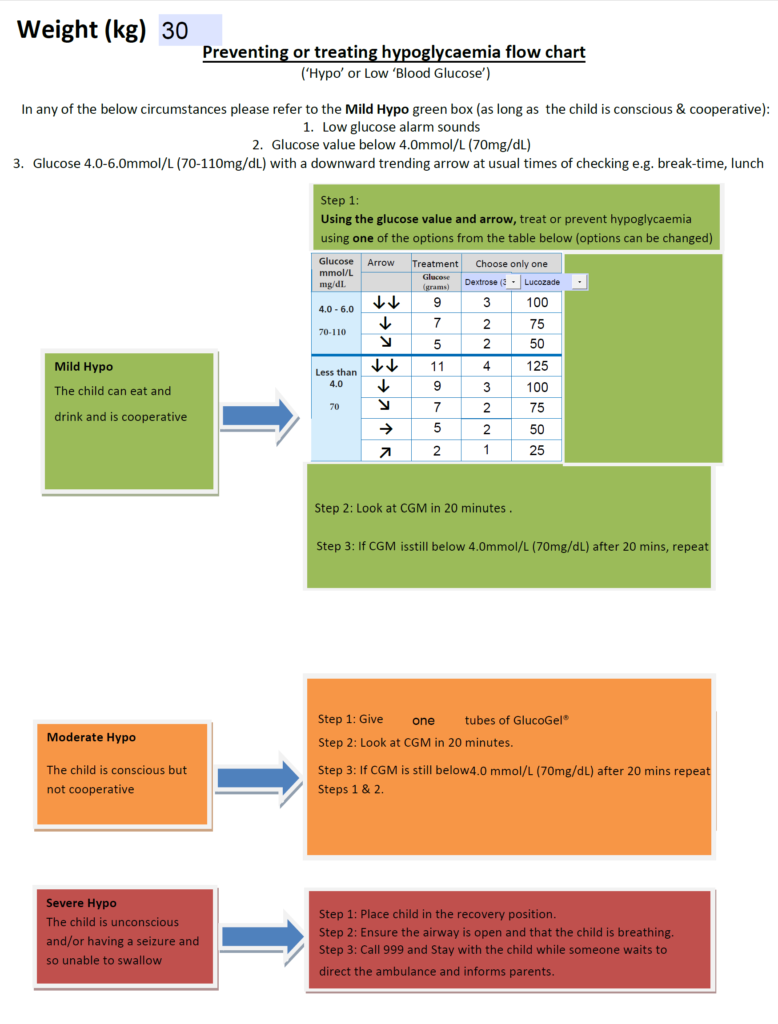
If you want this hypos guide, download it here.
High-fat meals
We know from the Mealtime Insulin Guide that high-fat meals with carbs, such as pizza and takeaways, require additional insulin.
In theory, if you enter 100% of the carbs eaten, SmartAdjust will take care of the rest. But some trial and error might be needed. Some people need to dial in 25-50% extra carbs (fake carbs) 90 minutes after eating to combat insulin resistance from high-fat meals. For example, if the meal is 100g carbs, then, 100g goes in upfront, followed by 25-50g in 90 minutes time.
Exercise
There is the quick and dirty way and the more comprehensive planned method.
The quick and dirty method
This involves putting on the activity mode before starting the exercise, ideally 90 minutes before. Then, supplement with small amounts of carbohydrates every 20 minutes as required.
Do not shovel loads of carbs in at once as the glucose might shoot high and the algorithm will increase the insulin and hypo risk.
How many carbs every 20 minutes?
Good question.
It depends on how much you weigh. Here is an example for a 50kg person. The Survive and Thrive – (Omnipod 5) will provide a personalised chart upon entering your weight at the top.
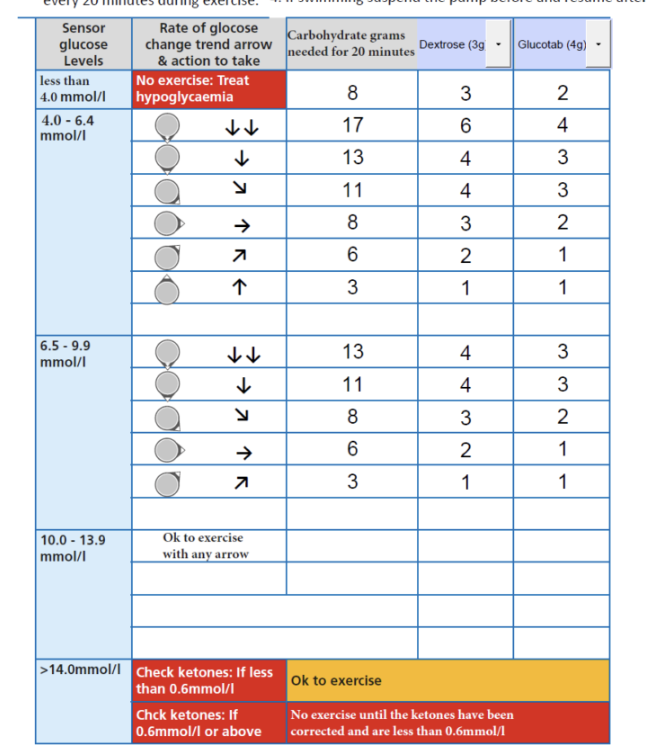
You can download the mmol/L and mg/dL versions if you want to try?
Comprehensive planned method
To be able to use this method, you will need to work your way through the Exercise Guide. You need to understand exercise types, bolus reductions, and how to change a plan after a trial.
Read it?
Great, you are up to speed with exercise management.
This T25/T25 table should now make complete sense! If you have not read the article on the recent AID and Exercise Consensus guideline, you will also notice the specific infographic below the simple T25/T25 grid.
This downloadable exercise tool for the Omnipod 5 makes creating and adapting exercise plans easy!
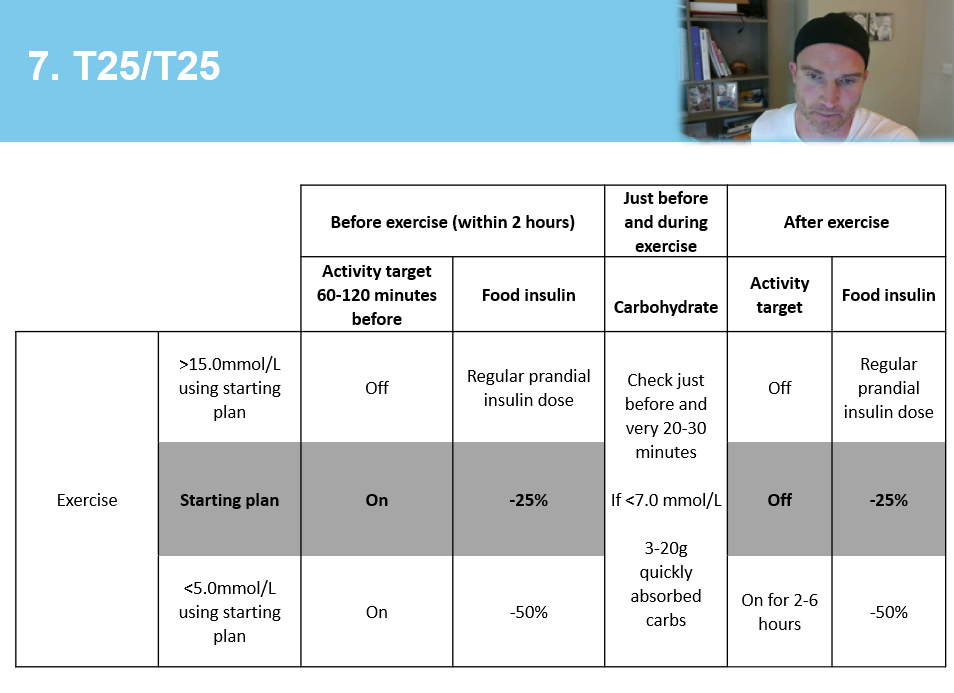

Go forth and conquer Omnipod 5

Amazing advice – thank you!